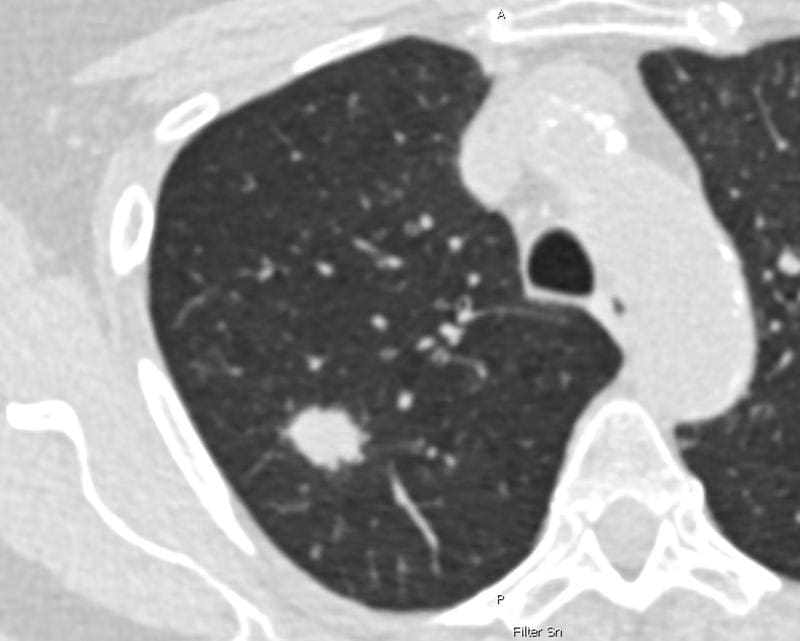Study calls for expanded criteria for early detection of lung cancer
To reduce the high mortality rate from lung cancer, an early detection program is to be launched in Germany from April 2026, aimed at people aged 50 and over with a long history of heavy smoking. A publication by Charit├® ŌĆō Universit├żtsmedizin Berlin, Hannover Medical School (MHH), LungenClinic Grosshansdorf and University Medical Center Schleswig-Holstein (UKSH) now shows that a selection of participants not only according to age and smoking history, but also according to additional criteria, allows more cancer cases to be detected at an early stage. This is particularly relevant for women, as the research team describes in the journal The Lancet Oncology .
Every year, about 57,000 people in Germany are diagnosed with lung cancer, often with a fatal outcome, as the disease is usually discovered too late. The planned program is intended to check suspicious lung changes in high-risk people using computed tomography (CT). So far, participants between the ages of 50 and 75 who have smoked heavily for at least 25 years and either still smoke or quit less than ten years ago are planned, whereby tobacco consumption must mathematically result in at least 15 pack years.

Data from the HANSE study suggest that these criteria overlook some high-risk individuals who could benefit from the program. By taking other factors into account, almost 20 percent more lung cancer cases could be detected, as the head of the study, Prof. Jens Vogel-Claussen, explains. He is Director of the Clinic for Radiology at the Charit├® and initiated the study at the MHH.
The study, conducted as part of the German Center for Lung Research (DZL), tested the effectiveness of CT screening when selected according to the comprehensive PLCOm2012 score, which includes age and smoking history, educational level, weight, presence of chronic obstructive pulmonary disease (COPD), past cancers and familial lung cancer cases.
The results were compared with the planned criteria, which only take into account age and smoking history (NELSON score). All people at high risk after one of the scores had two low-dose CT scans performed at annual intervals. Suspected cases were examined in interdisciplinary conferences and dealt with if confirmed.
In about 4,200 active or former smokers screened after PLCOm2012, 108 lung cancer cases were found, 19.4 percent more than in the NELSON group with around 3,900 people and 85 cases. With the extended score, about six percent more people would have to be screened, but screening would be more efficient, as fewer CT examinations per diagnosis would be necessary, as Prof. Martin Reck, chief physician of the oncology focus at the LungenClinic Grosshansdorf, notes.
Women in particular benefited from the expanded catalogue of criteria. In the study, 2.6 percent of women received a diagnosis, compared to 1.8 percent of men. Many women fell out of the narrower catalogue because they had consumed fewer cigarettes despite active smoking and did not reach the inclusion threshold. More often, they had familial cases of lung cancer, their own history of cancer or COPD, factors that could have a stronger effect on women but are not included in the current catalogue, as Dr. Sabine Bohnet, head of the Lung Cancer Center at the UKSH Campus L├╝beck, explains.
The program aims to reduce mortality through early detection and treatment. The study shows that an adjustment of the inclusion criteria is possible and necessary in order not to overlook important risk groups, Vogel-Claussen sums up.
The HANSE study is a trial initiated by researchers and compared NELSON criteria with a PLCOm2012 score with a six-year risk of at least 1.58 percent. Participants were recruited at MHH, UKSH-Campus L├╝beck and LungenClinic Grosshansdorf, all certified lung cancer centers of the German Cancer Society. It was funded by the DZL and by AstraZeneca as part of the Lung Ambition Alliance. The study will be continued: Between autumn 2025 and summer 2026, high-risk participants who have already been included will receive another CT screening. In addition, for the first time, it is being tested whether blood biomarkers enable even earlier diagnosis in order to increase the precision and effectiveness of screening.
Original Paper:
Editor: X-Press Journalistenb├╝ro GbR
Gender Notice. The personal designations used in this text always refer equally to female, male and diverse persons. Double/triple naming and gendered designations are used for better readability. ected.




